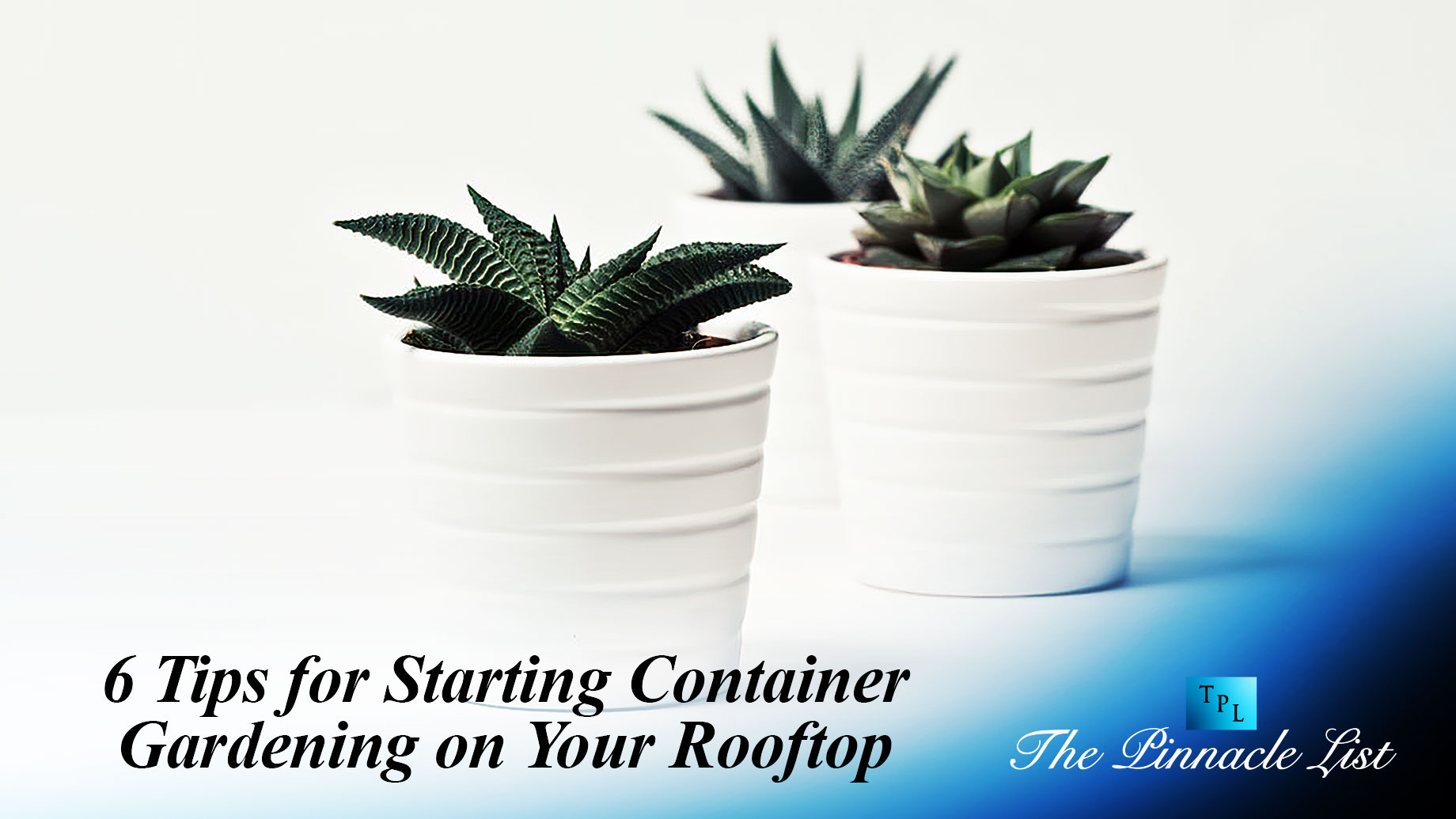
Rooftop gardening has been gaining popularity in the US over the last few years, especially in urban areas across the country, like New York and Los Angeles. Most people, when considering rooftop gardening, opt for container gardening.
This is mostly because using containers or planters for growing plants is easy and hassle-free. However, if you’re new to container gardening, you should go into this knowing a few things.
In this article, we’ll share a few tips that will help you successfully start container gardening on your rooftop.
1. Assess Your Rooftop’s Structural Integrity and Weight Limitations
Before you start setting up your rooftop garden, it’s crucial to assess the structural integrity of your building’s roof. Not all rooftops are designed to handle the weight of a garden, especially when containers are filled with soil, water, and plants.
It’s best to discuss the details regarding all this with a structural engineer. Usually, accommodating a few containers on your roof shouldn’t be a problem. Even then, you should consult with the engineer regarding your rooftop’s structural integrity and weight limitations. If anything, it will give you more confidence to go ahead with your rooftop container gardening plan.
2. Choose the Right Containers
Selecting the right containers or planters is vital for a successful rooftop garden. A lightweight container or planter box is ideal as it puts less strain on your rooftop’s structure. Avoid heavy materials like concrete or clay.
Additionally, ensure that your containers have proper drainage holes to prevent waterlogging and root rot. Elevated containers or plant stands can also be a great option to reduce direct contact with the rooftop surface.
As Crescent Garden explains, the right type of containers will work for you and not the other way around. That means selecting the right containers will help ensure both functionality and aesthetics in your rooftop garden. Therefore, always take your time when picking them out for your garden.
3. Pick the Ideal Plants for Your Rooftop
The choice of plants is a critical aspect of rooftop container gardening. Consider the climate of your region, the amount of sunlight your rooftop receives, and the wind conditions. Drought-resistant plants, such as succulents and certain herbs, are excellent choices for hot and sunny rooftops.
According to Garden Design, plants like tomatoes, strawberries, and peppers are ideal for a rooftop garden. Some plants, like tomatoes and peppers, thrive in warm temperatures and will require more care and attention. Research and select plants that can withstand the unique challenges of a rooftop environment.
4. Provide Adequate Watering and Drainage
Rooftop gardens tend to dry out quickly due to their exposure to wind and direct sunlight. Therefore, it’s essential to provide adequate watering to keep your plants hydrated. Install a drip irrigation system or use self-watering containers to ensure a steady water supply. Mulching the top layer of soil can also help retain moisture.
On the other hand, proper drainage is equally crucial to prevent water buildup, which can lead to structural damage and plant diseases. You should elevate your containers using bricks so that the water can flow out freely through the container drains.
5. Protect Your Rooftop Garden from the Elements
Rooftop gardens are more exposed to the elements compared to traditional gardens at ground level. Strong winds can damage or uproot plants, while intense heat can scorch leaves. Consider installing windbreaks, such as trellises or bamboo screens, to shield your plants from strong gusts. Shade cloth can help protect your garden during scorching summer days.
As reported by TIME USA, LLC, hurricanes in the US are likely to get stronger in the coming years. Because of that, the damage from these storms will be very severe. Thus, during such extreme weather conditions, it’s advisable to move delicate plants indoors or under cover temporarily to prevent damage.
6. Ensure Regular Maintenance and Soil Health
Like any garden, rooftop container gardens require regular maintenance. Always keep an eye out for signs of pests, diseases, and nutrient deficiencies. Prune plants and branches that are affected by diseases. Make sure they no longer remain part of your rooftop garden’s ecosystem once you discover them.
Consider using organic fertilizers to replenish nutrients in the soil. Over time, soil can become compacted, so it’s essential to loosen and aerate it periodically.
Conclusion
When you have a rooftop container garden, you’re not only benefiting yourself but are also doing your city a favor. As reported by the World Economic Forum, it’s been found that rooftop gardens can alleviate heat in cities. Thus, when you’re engaging in this activity, you’re also contributing to your locality’s welfare.
However, before you commit to it, make sure you’ve done your research on rooftop container gardening, as discussed above. Only then can you do it efficiently and reap its benefits.